“Hey, this is going down. You should show up,” cinematographer Darrell Miller told photographer Wade McKoy over the phone one cloudy day in 2019.
Extreme skier Derek Depiero had declared he was going to ski the perilous Cody Peak high in the southern Teton Range of Jackson Hole, Wyoming. Miller was filming the feat for his company Storm Show Studios and knew McKoy might also like a still image for his magazine, Jackson Hole Skier. Depiero’s plan was this: Ski down the steep Shirley’s Snowfield, jump into a chute called Igneous, ski a line, and then hurl himself off the cliff, flying 100 feet in the air to land in the bank of powder below—something only a handful of skiers had ever attempted.
“As you can see, there are clouds,” says McKoy of the image he captured (below). “The light is not good.” McKoy monitored the scene off-slope for an hour from the ski resort facing the peak, knowing the radio chatter from Miller’s team would eventually signal Depiero “Go when you’re ready!” once there was a break in the clouds. Suddenly the light peeks through. “But he doesn’t go. And he doesn’t go. And he doesn’t go. And then right as the light is going away, he goes,” explains McKoy. Depiero made several turns on the slope in bad light. Then, just as he halted at the bottom of the slope with snow cascading over the rocky cliff below—“That in itself was a ballsy move,” adds McKoy—the light broke through for just 10 seconds. McKoy made his shot.
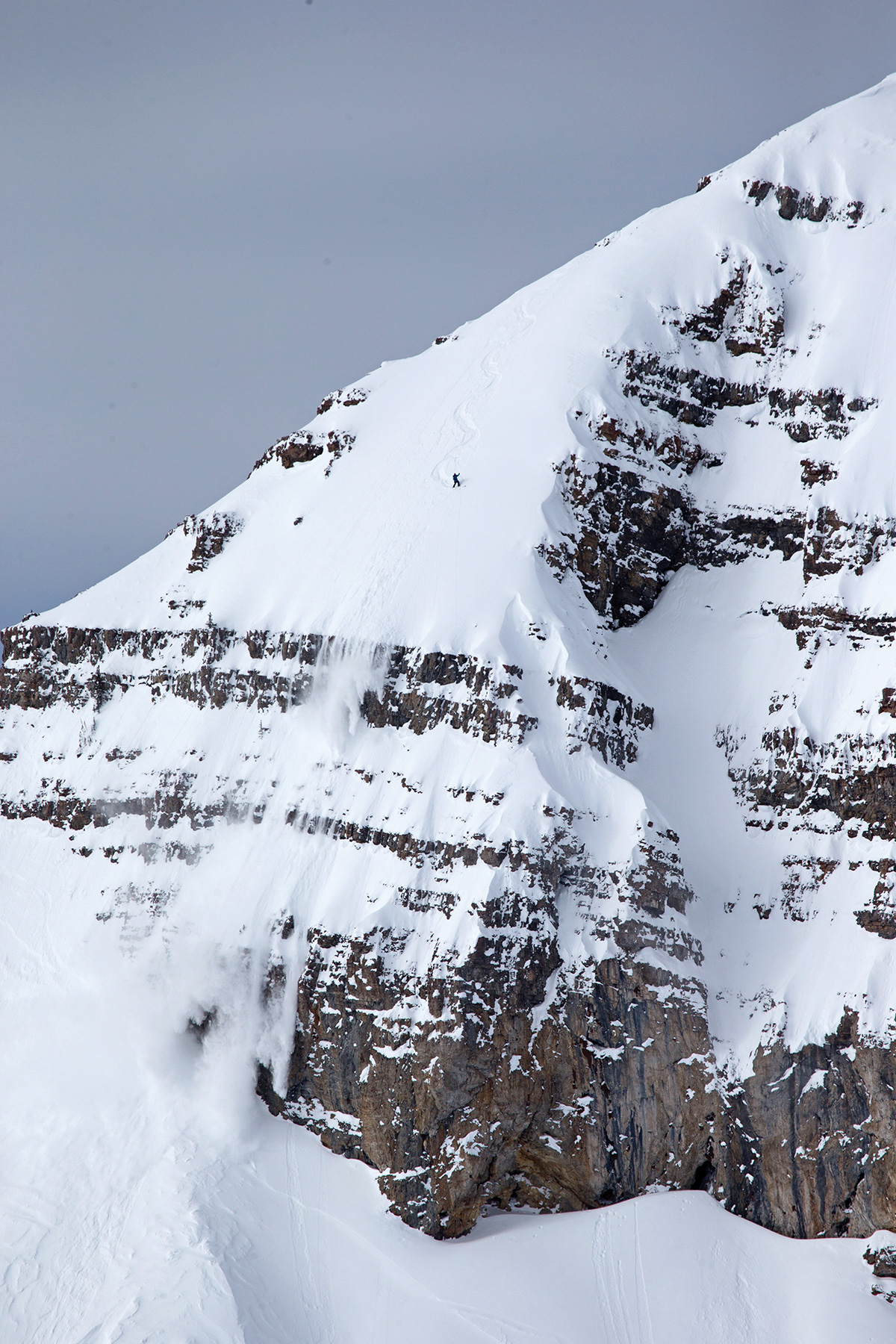
Ski action photos document amazing feats of athleticism—flashes of skiers suspended in air mid-flip, skiers racing down remote, near-vertical alpine peaks. But in between those heroic feats is a lot of waiting—waiting for the light. Sponsored athletes want quality photographs of their skiing adventures, photos they can share with the brands that pay them to wear their clothing and use their gear. Photographers need good light to make those quality photos.
“We wait for light a lot,” says McKoy. “We are looking at holes in the sky. ‘Oh, here comes a hole! Here comes a hole! Ohhhh, we missed it.’ We wait for another 10 minutes. ‘Oh, here comes a hole. Oh, this one is going to get us! Oh, my God, here it comes! Get ready! Ready! All ready! Skiers, ready!’ The radio chatter goes nuts. That’s what it’s like on these things. And it’s cloudy a lot here, so we have to deal with it a lot.”
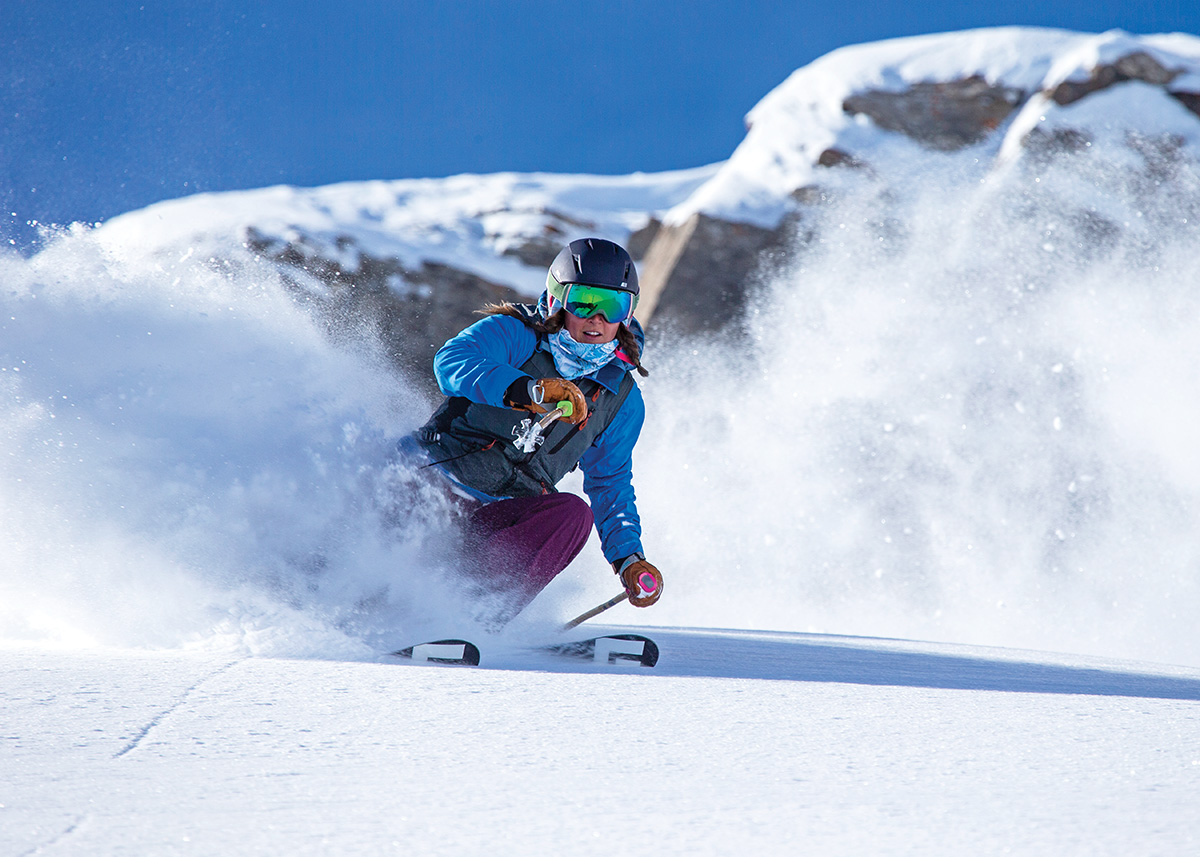
LEARNING BY DOING
McKoy didn’t intend to stay in Wyoming, not for 47 years, anyway. He and an adventure-loving friend made the trip from Jackson, Mississippi, to Jackson, Wyoming, in 1974 after they’d graduated from college. The intention was to be ski bums for one winter, McKoy says, but it took three for him to be satisfied with his skills. “I always figured then I will go back to Mississippi and get a job and be close to family because that’s what everybody did. Hardly anybody left and never came back,” he says. But then, “I just didn’t.”
Instead, he met a photographer for a local newspaper who needed a partner to help make images of a citizen ski race called NASTAR. “As far as learning about photography, it was learning by doing,” says McKoy. He read up on the technical aspects of photography and perused the ski magazines at the local bookshop to learn about composition. Before long, he was submitting his own work to ski publications, including Powder, which in 1978 published a first-person account he wrote about a skiing adventure. Over the course of 20 years McKoy was sent on more than a dozen skiing expeditions to photograph and in some cases write for numerous publications, including Men's Journal, Powder, Ski, and Skiing.
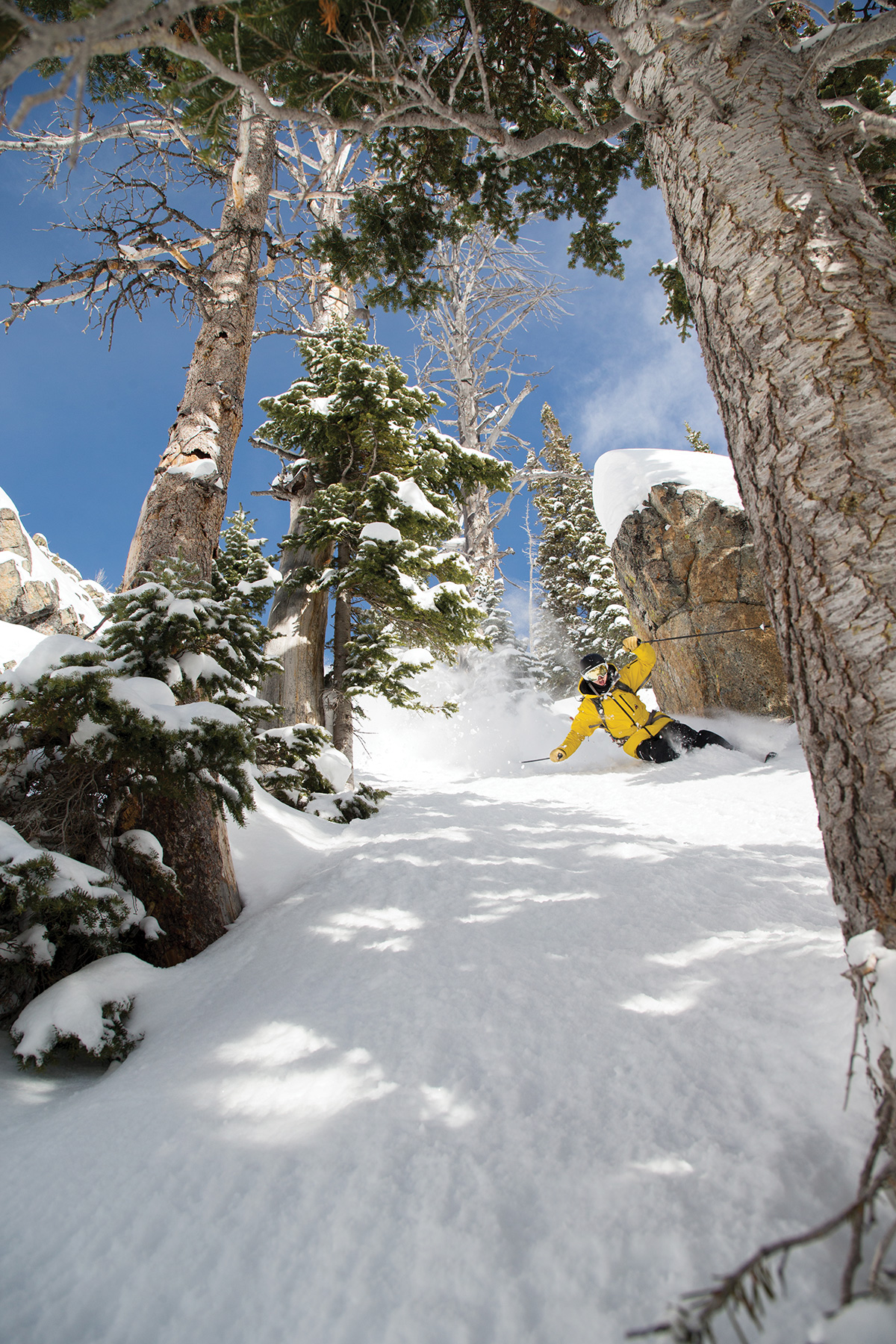
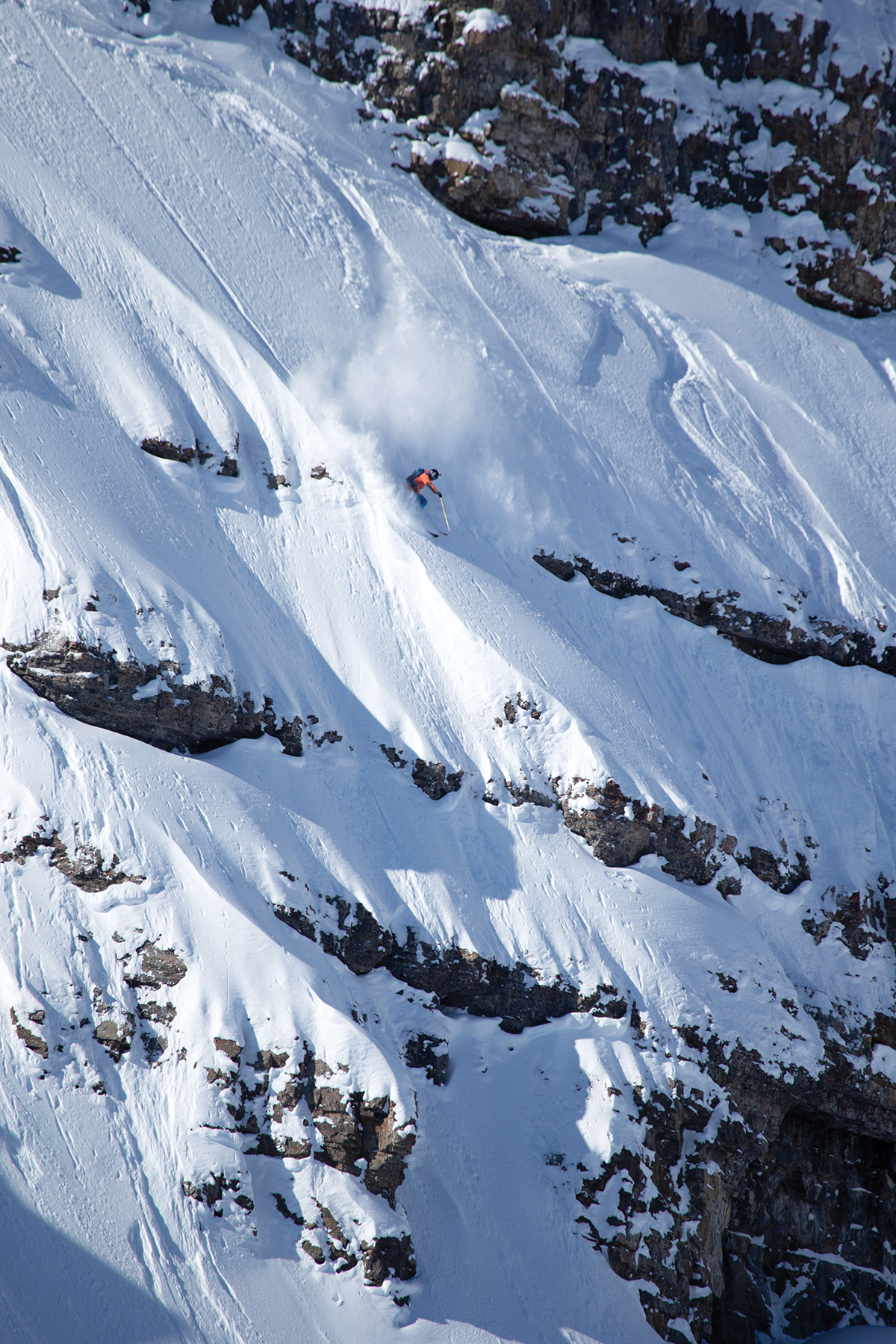
There are two ways to arrive at a career in ski action photography, McKoy says: from a photography background or a skiing background. “Most of my contemporaries came from the skiing side,” he says. “Only a few came from the photography side.” That’s because ski action photography requires a high level of skiing skill. “You have to have your skill set down to where it’s bomber, it’s second nature, it’s like walking on the sidewalk.”
Shooting off-slope, as he did in Depiero’s case, isn’t as physically demanding. But when you’re shooting on-slope, getting into position to make the best photograph may mean traversing a steep run where one mistake could trigger a dangerous slip and fall. When you’re shooting in the backcountry, the hazards multiply. “The mountains are dangerous places,” says McKoy. “Weird stuff happens. Rocks just come off the cliff and come crashing down.” The risks of avalanche or of one of the team getting injured in a remote locale as the light is fading—which might require search and rescue assistance—are real.
THROUGH THE GATES
In McKoy’s early days in Jackson, he made photographs of skiers only within the boundaries of the Jackson Hole Mountain Resort. That’s because until 1999, it was illegal to ski the mountain terrain outside the resort. The sheriff’s department enforced the law with fines and even jail time. At the time, McKoy was photographing a lot of amateur ski racing at the resort, and some of those vacationers would hire him for separate sessions. “But they were never the best skiers,” he says, “and I thought, this is a waste of my time. I quickly realized I needed to get with the best skiers.”
The best skiers on the hill were a group of locals born and raised in the area who called themselves the Jackson Hole Air Force. “These were their mountains,” says McKoy, “and they were not going to let any ski patrol or resort tell them where they could or couldn’t go. So, they started poaching the out-of-bounds.” It became a thing: this battle for free skiing in the remote ranges above the resort. In fact, a documentary called “Swift. Silent. Deep.,” for which McKoy was interviewed, chronicles the Jackson Hole free ski, or freeride, movement. Though McKoy supported that evolution, he never went out-of-bounds illegally; it would have jeopardized his business relationship with the Jackson Hole Mountain Resort, where he was contracted as a photographer. But he did photograph the Jackson Hole Air Force in-bounds.
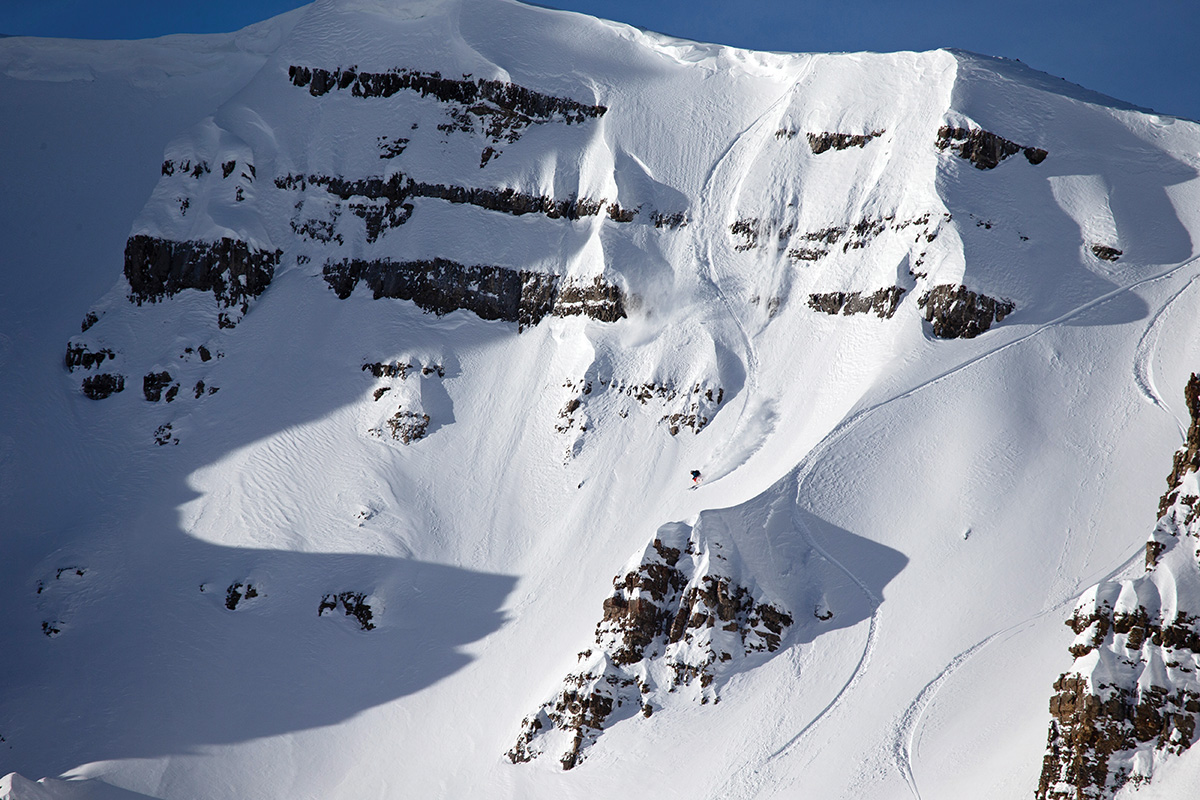
In 1999, the gates were opened, and it was legal to ski the southern Teton alpine range outside the resort. “We never shot in-bounds after that,” McKoy says. He and the skiers he photographed would climb up to the highest peaks, sometimes traversing over rock as well as snow, for the most photogenic ski runs. By this time, skis themselves had evolved into fatter versions that enabled athletes to ski terrain faster and more elegantly than they could using the narrower designs of the past.
“There was a lot of talent,” says McKoy. Freeride competitions began to pop up. The Jackson Hole Air Force was a small group of guys who were open to being photographed and filmed, but there was no commercial angle to it. “They were just having fun.” But once the freeride movement blossomed, “You had 20, 30, 100 skiers who were making money skiing for companies in this freeride clothing and skiing equipment,” says McKoy.
“They were paying people to wear their stuff, and this business model translated to us because these people needed photos.” Sponsored skiers would reach out to McKoy because they’d seen his photos in magazines like Powder, Ski, and Outside and arrange for him to make their photographs on the slopes. He would then submit those photos to the sponsors in hopes of selling them photo usage for ads and promotions. “It was a symbiotic thing.”
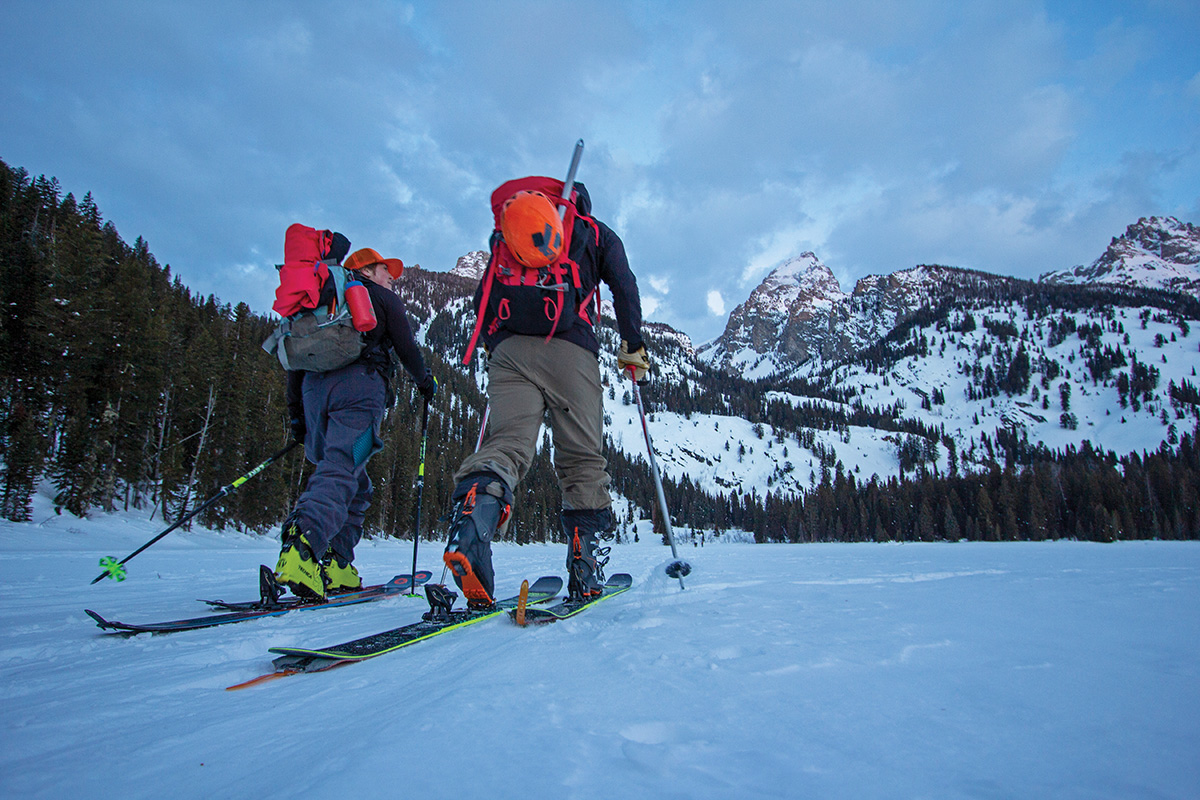
ATHLETIC FEATS OF PHOTOGRAPHY
For 37 years of his 45-year photography career, McKoy and his partner Bob Woodall published a free-distribution magazine, Jackson Hole Skier, covering the best skiing in the area. In addition to the editorial and commercial assignments he took on, McKoy also made his living via magazine publishing, which became more important as his career progressed. After traveling on assignment to remote skiing locales for magazines like Men’s Journal and Powder for 20 years, he realized we wanted to be home more. “I was getting older, and the athletes were not getting older. I was doing this with people in their 20s,” he says. “I just got to where I wanted to stay home. We have a beautiful home here. I have a nice wife to spend time with. And it’s a wonderful ski area. There is so much shooting that is right here in our home.”
In 2019, he published his last edition of Jackson Hole Skier. On the cover was a photo of local ski pro Sander Hadley (below), whom McKoy photographed at the 2019 Kings and Queens of Corbet’s competition at the Jackson Hole Mountain Resort. Making the photo was no small feat. Of the 20 or so photographers who were permitted access to the competition, McKoy was the only one who requested to rappel and ski down into a snow drift below the jump, where he could point his lens up toward the athletes performing stunts in the air overhead.
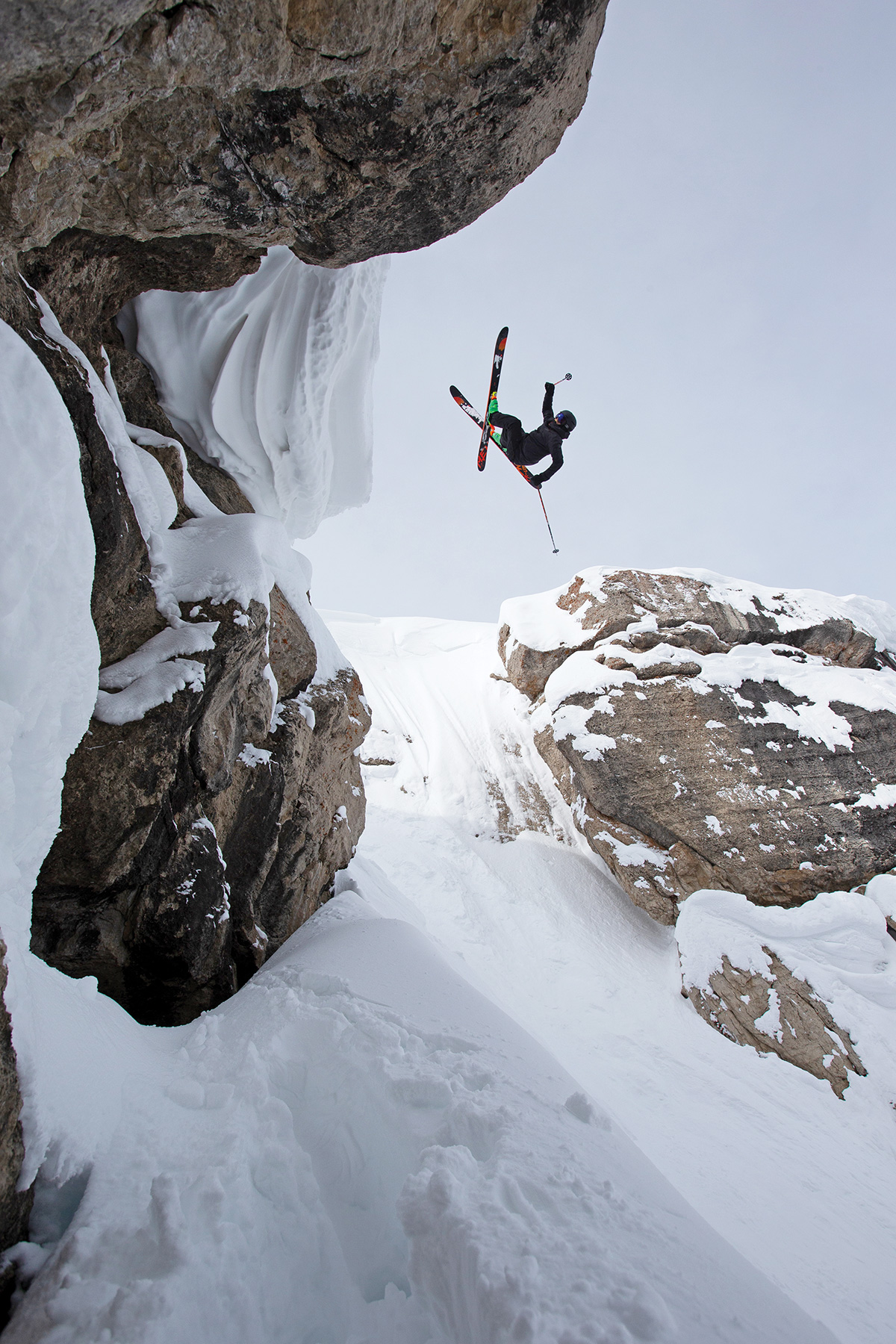
The slope was so steep he had to wear a climbing harness and hook into a rope controlled by a ski course worker who would break his fall if McKoy were to slip as he skied down to his perch. “It’s a technical move,” says McKoy. Even the competitors on the sidelines watching him get into position were saying, “Oh, my God,” he laughs.
Once in position, he knew his toil was worth it. Competitor after competitor soared over his perch, making whirring shrieks as they spun and flipped in the air. It was wearying work crouching behind that drift with potentially hundreds of feet to fall below him, making the best images he could muster, he admits. In between competitors, he let his mind go blank. “You’re concentrating so hard when you’re getting ready for the shot because you don’t know when they’re coming,” he says. But those moments are the best part of the work he’s done all these years. “When I think back on those times, it was just really exciting,” he says. Being out there in the elements shooting is just one part of the job. “And it is absolutely the best part.”
Amanda Arnold is associate editor.

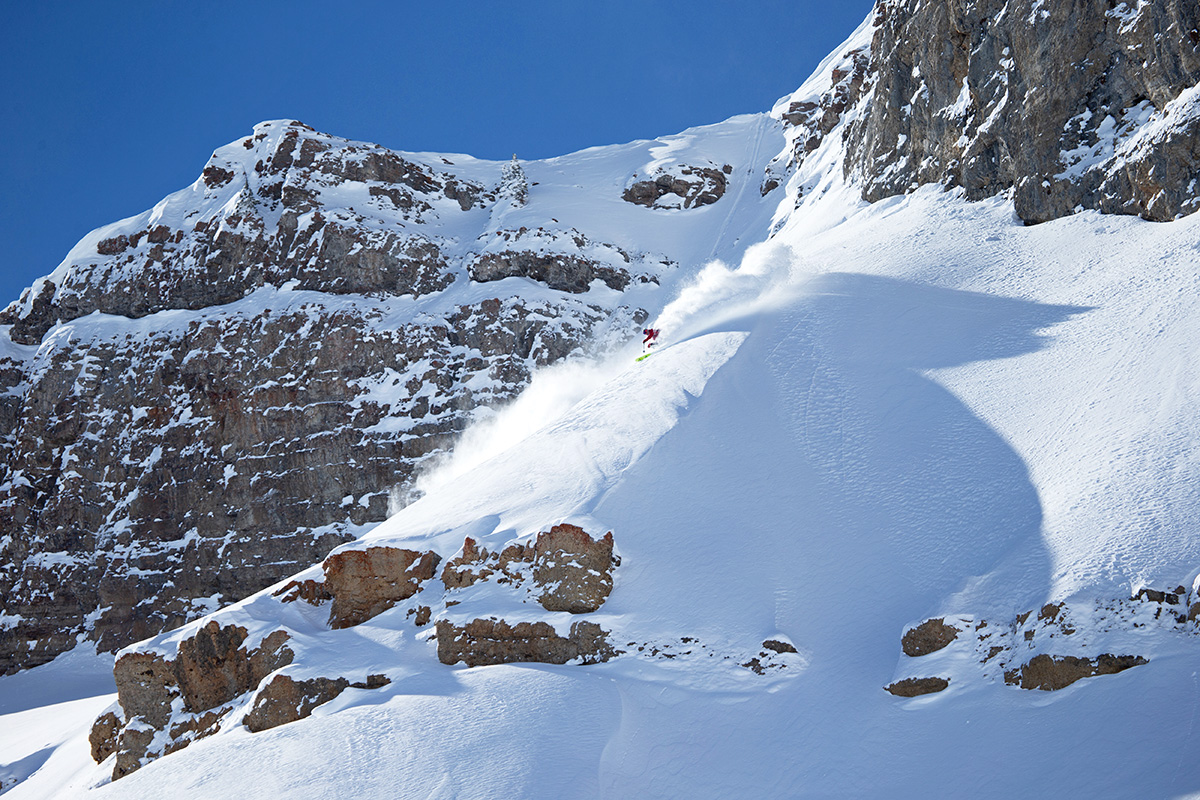
 View Gallery
View Gallery

